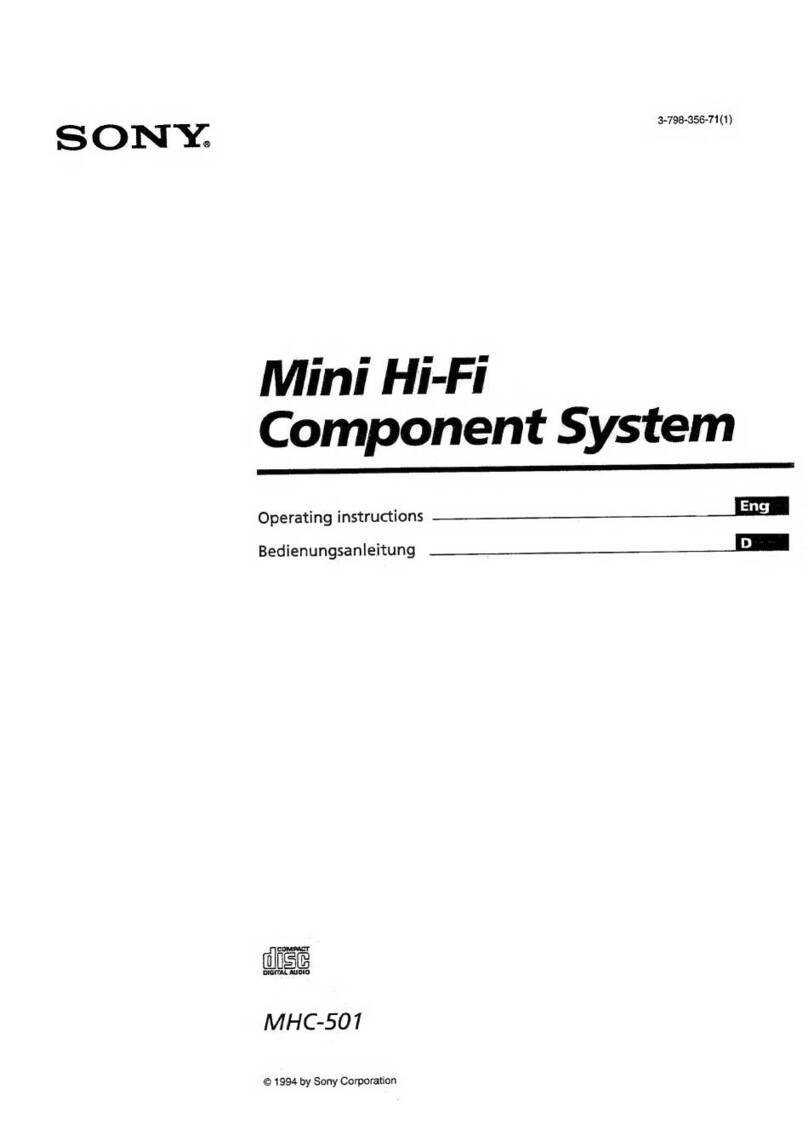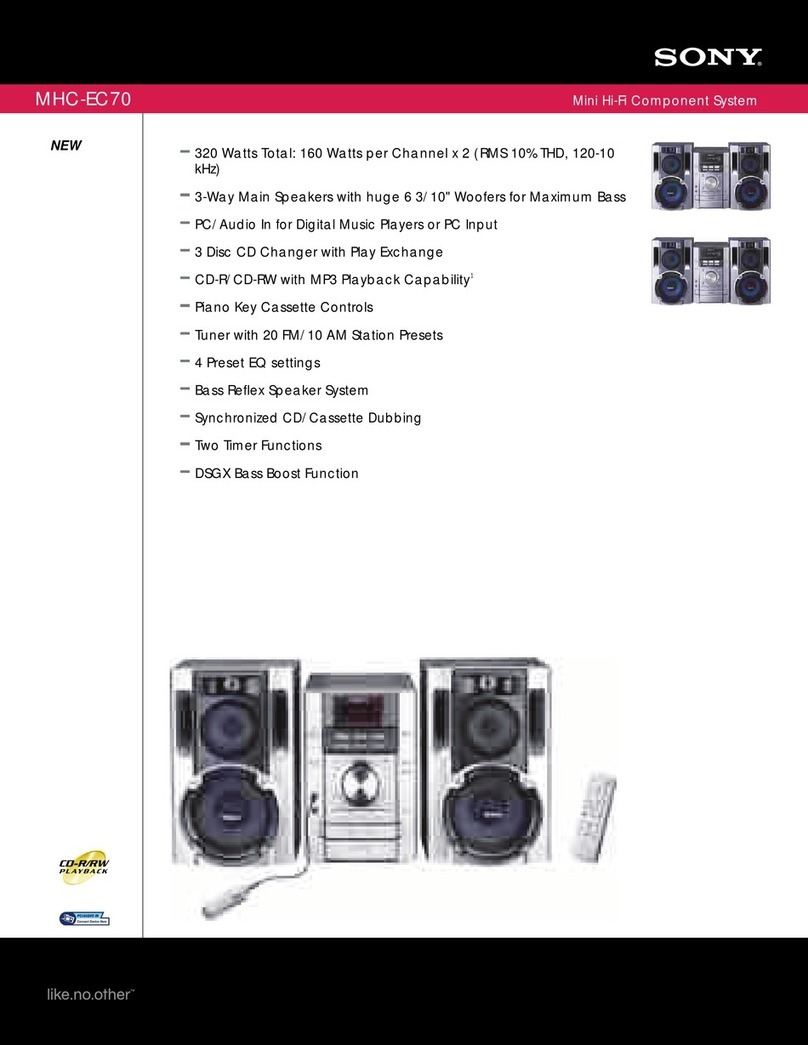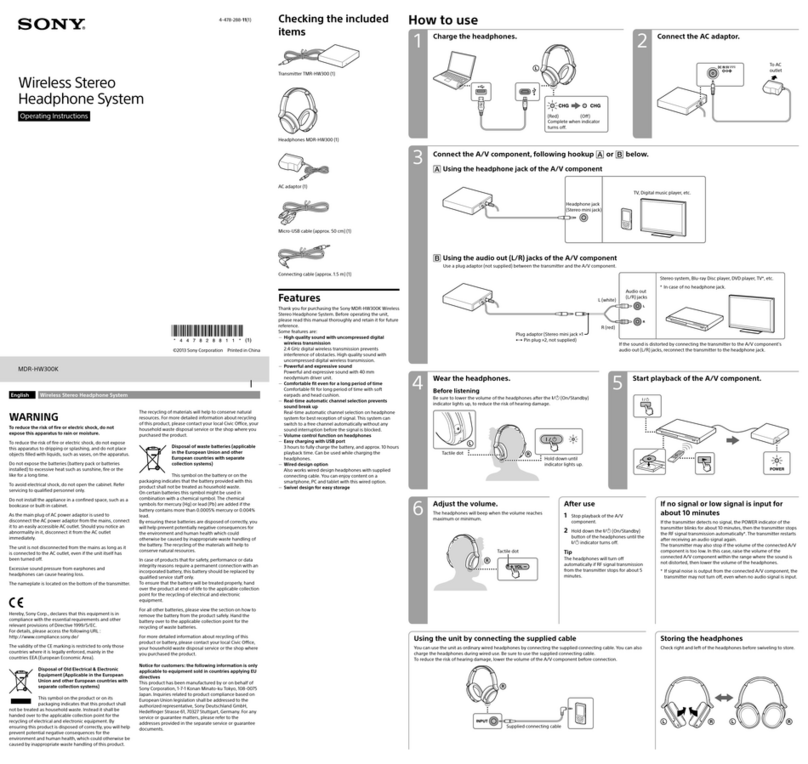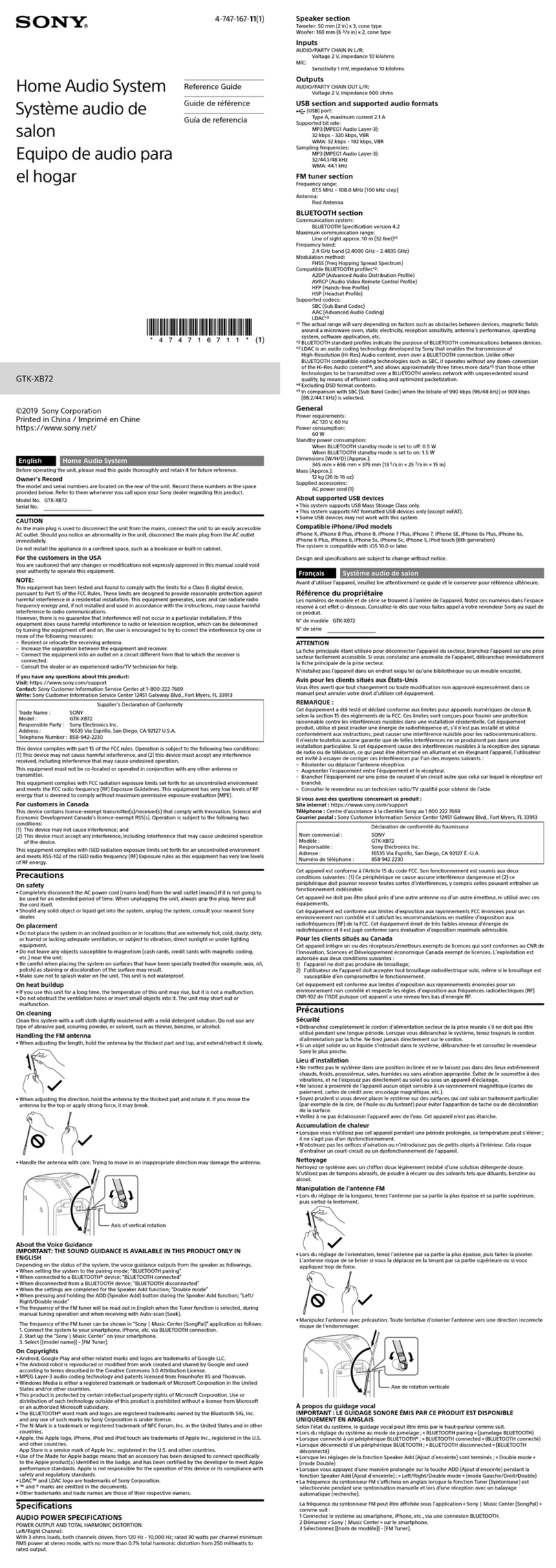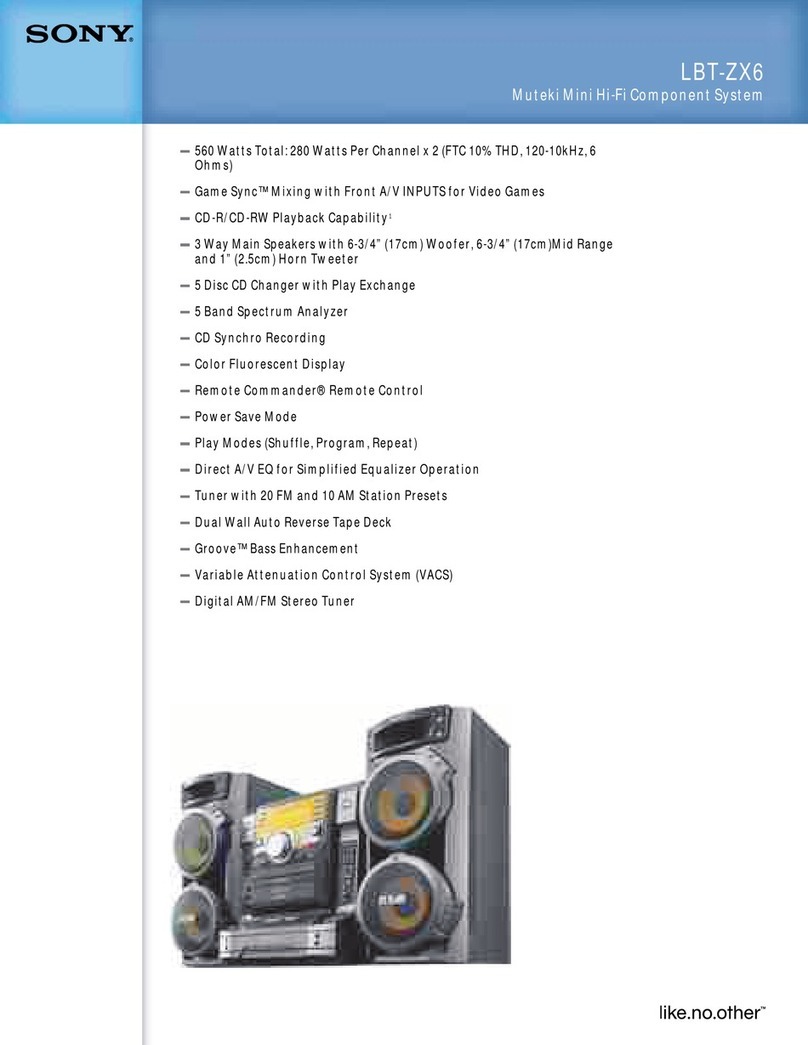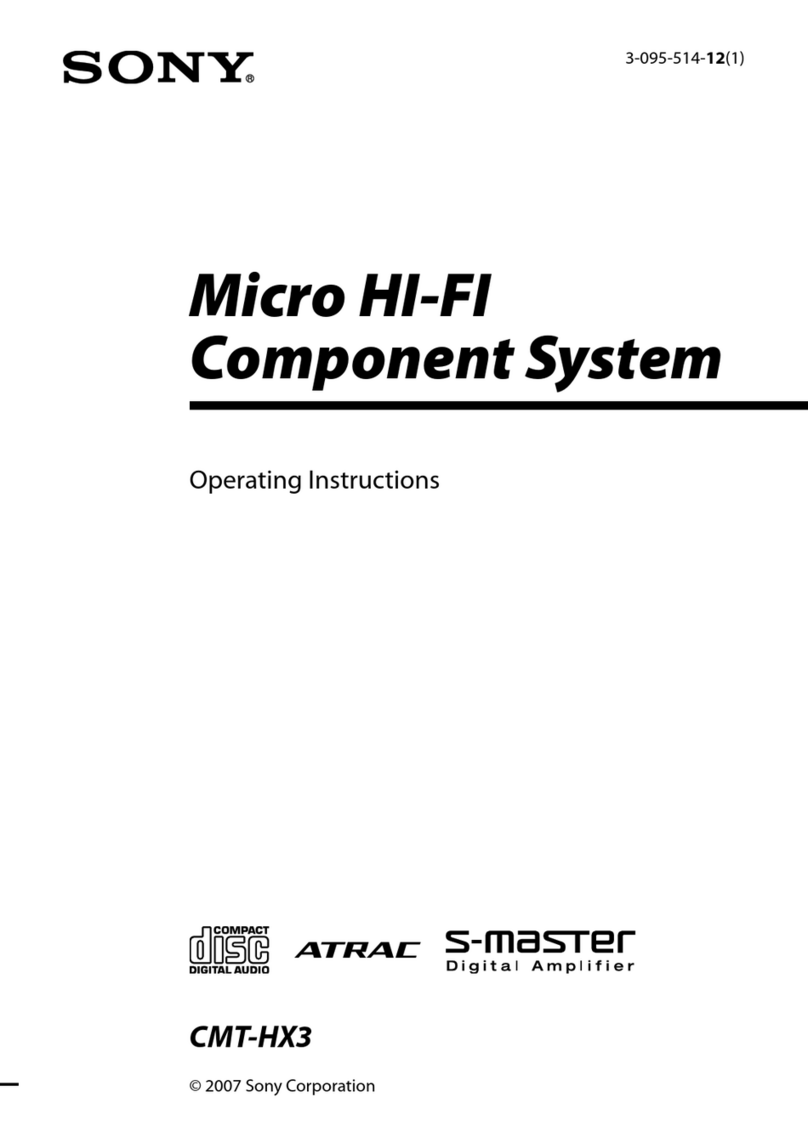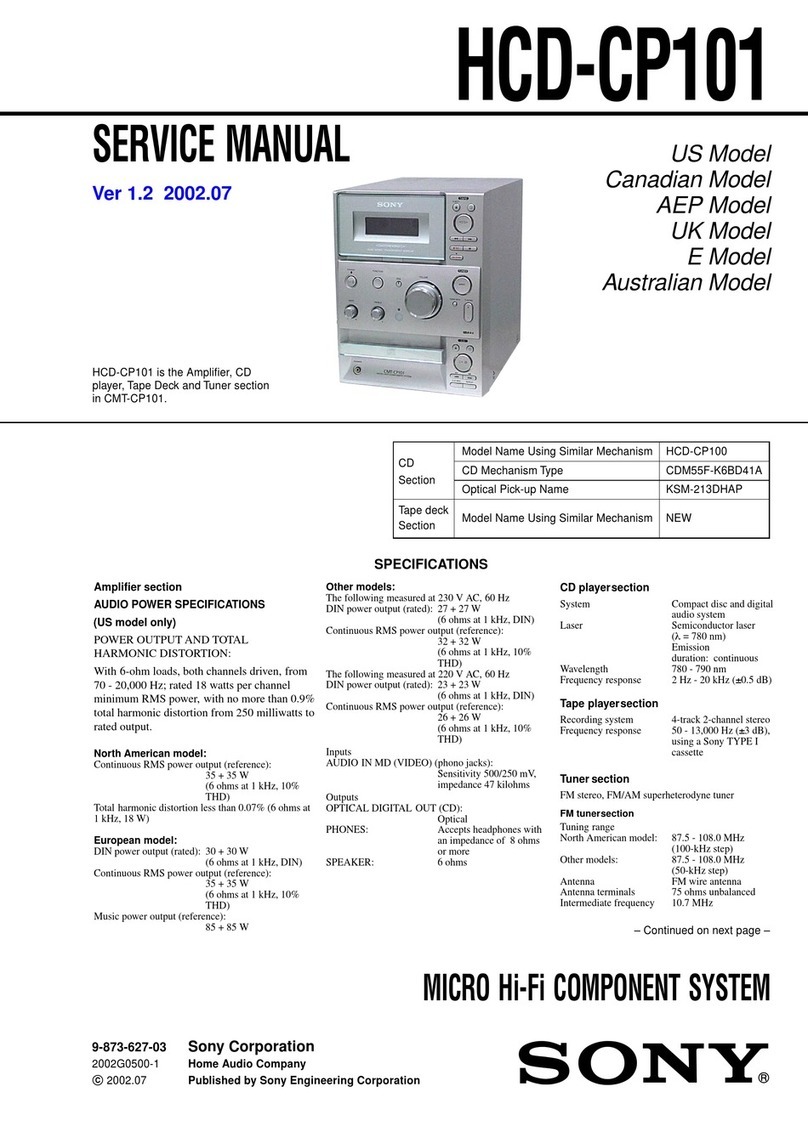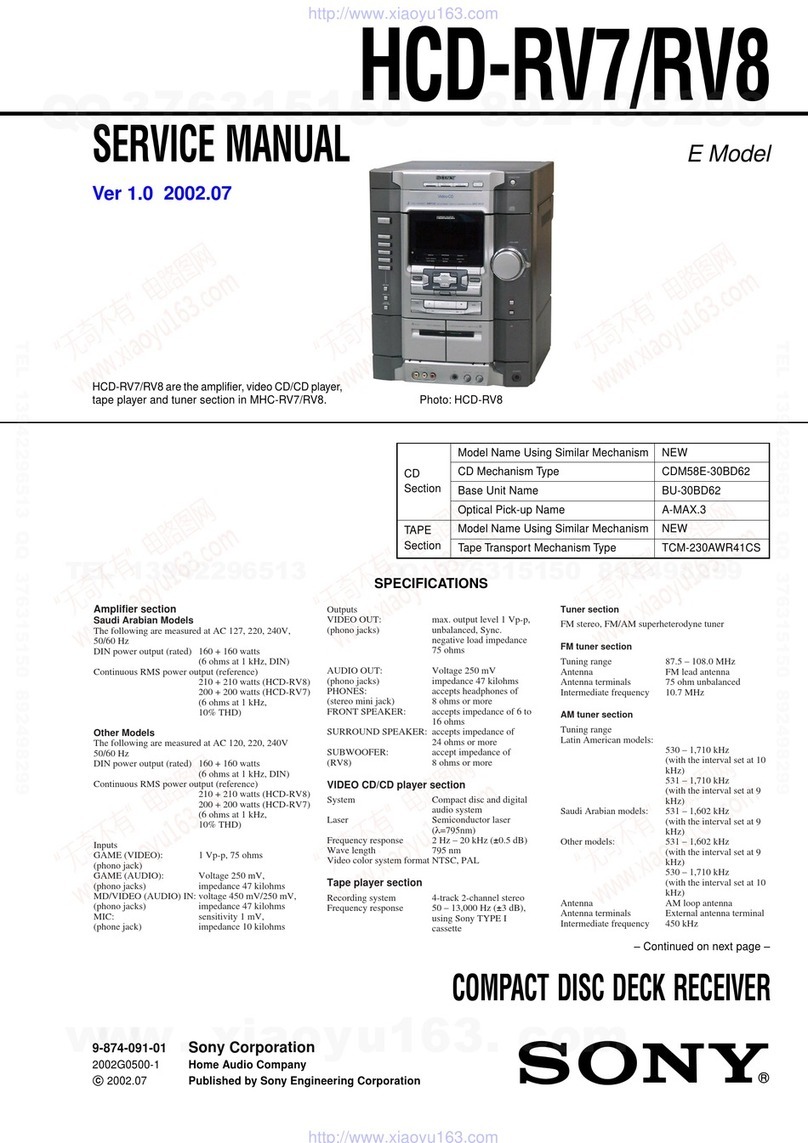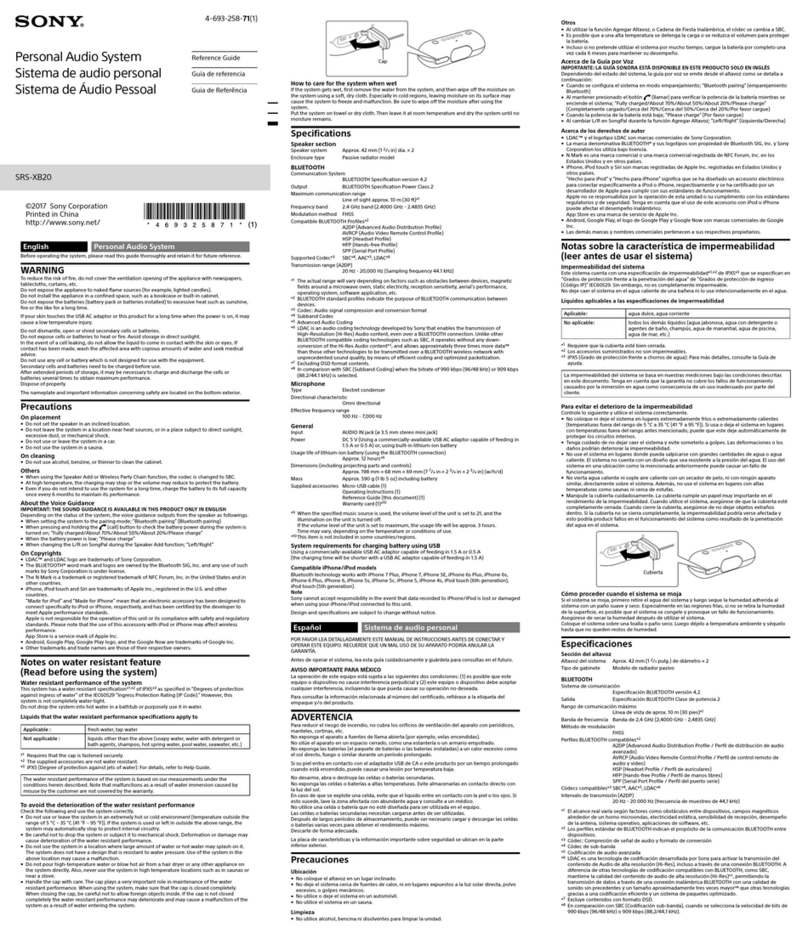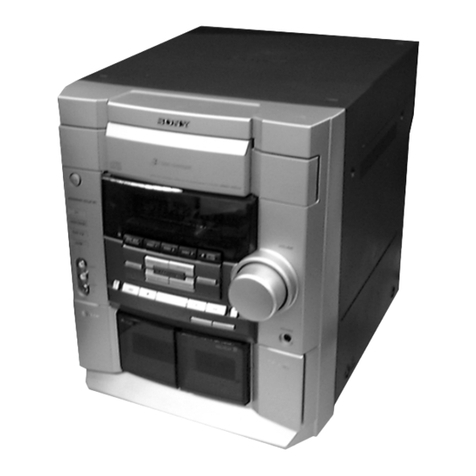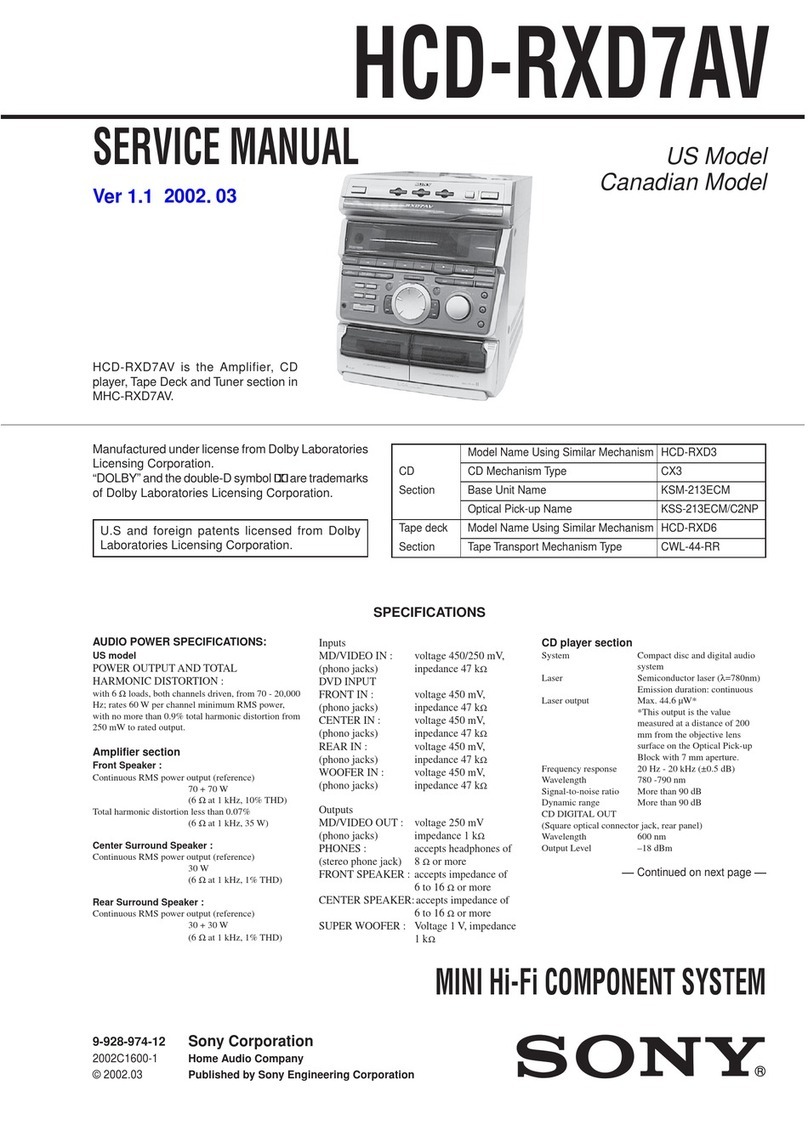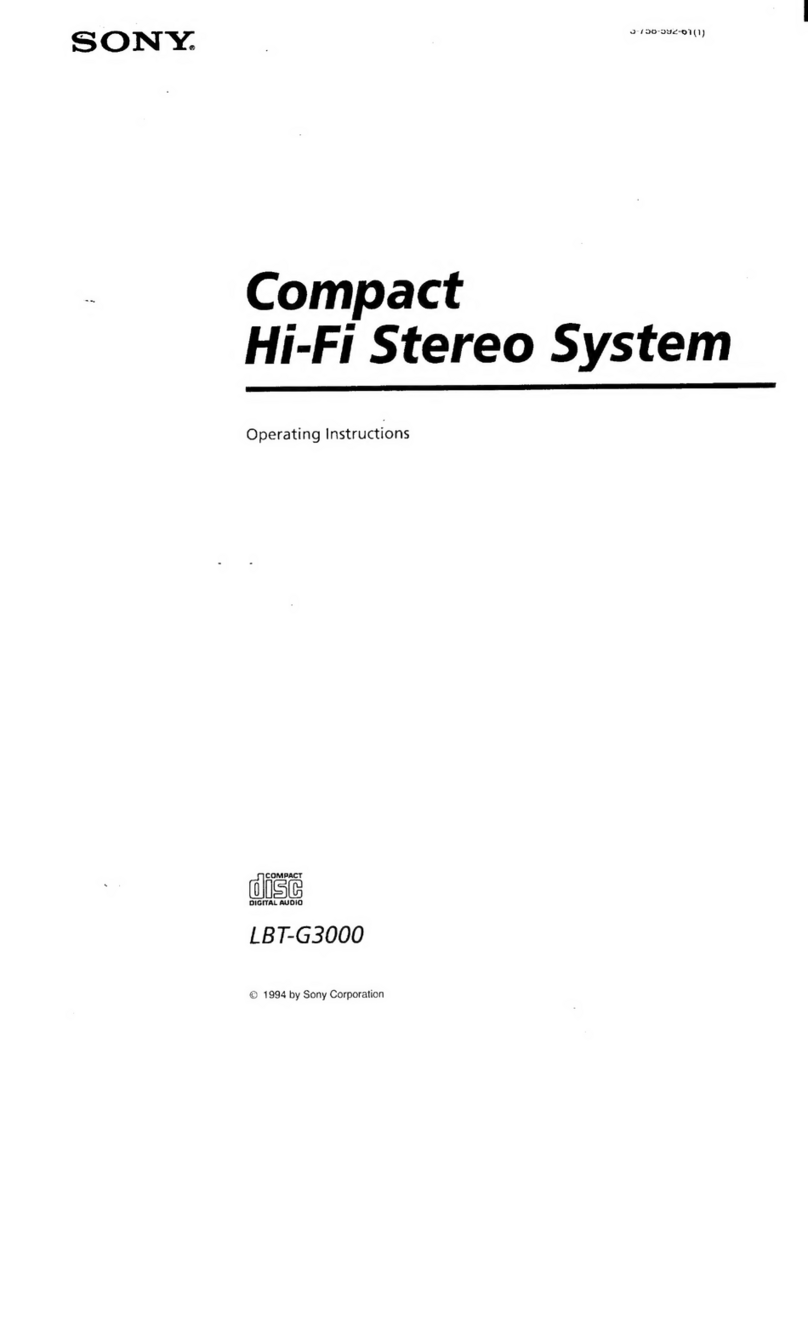– 4 –
TABLE OF CONTENTS
7-11. Printed Wiring Board – Main Section – ........................... 51
7-12. Schematic Diagram – Main (1/4) Section – ..................... 53
7-13. Schematic Diagram – Main (2/4) Section – ..................... 55
7-14. Schematic Diagram – Main (3/4) Section – ..................... 57
7-15. Schematic Diagram – Main (4/4) Section – ..................... 59
7-16. Printed Wiring Board – Mic/HP Section – ....................... 61
7-17. Schematic Diagram – Mic/HP Section –.......................... 62
7-18. Printed Wiring Board – Power Section – ......................... 63
7-19. Schematic Diagram – Power Section – ............................ 65
7-20. Schematic Diagram – Transformer Section – ................... 67
7-21. Printed Wiring Board –Transformer Section –................ 69
7-22. Printed Wiring Board – Leaf SW Section – ..................... 70
7-23. Schematic Diagram – Leaf SW Section – ........................ 70
7-24. Printed Wiring Board – Display Section – ....................... 71
7-25. Schematic Diagram – Display Section – .......................... 73
7-26. Schematic Diagram – Panel Section – ............................. 75
7-27. Printed Wiring Board – Panel Section – ........................... 77
7-28. Schematic Diagram – CD Motor Section –...................... 79
7-29. Printed Wiring Board – CD Motor Section – ...................81
7-30. Schematic Diagram – Surround Section – ....................... 83
7-31. Printed Wiring Board – Surround Section –..................... 83
7-32. IC Block Diagrams ...........................................................84
7-33. IC Pin Functions ...............................................................90
8. EXPLODEDVIEWS
8-1. Case Section...................................................................... 100
8-2. Chassis Section ................................................................. 101
8-3. Front Panel Section ........................................................... 102
8-4. CD Mechanism Deck Section-1
(CDM38L-5BD29AL, CDM38LH-5BD29AL) ............... 103
8-5. CD Mechanism Deck Section-2
(CDM38L-5BD29AL, CDM38LH-5BD29AL) ............... 104
8-6. Base Unit Section (BU-5BD29AL) .................................. 105
8-7. TC Mechanism Section 1
(TCM230AWR1, TCM230PWR1) ................................... 106
8-8. TC Mechanism Section 2
(TCM230AWR1, TCM230PWR1) ................................... 107
9. ELECTRICAL PARTS LIST ...................................... 108
1. SERVICING NOTE ..........................................................5
2. GENERAL ..........................................................................6
3. DISASSEMBLY
3-1. Loading Panel ....................................................................... 8
3-2. Front Panel ........................................................................... 8
3-3. Cassette Mechanism Deck .................................................... 9
3-4. Panel Board and Cont Com Board ........................................9
3-5. Disc Tray ........................................................................... 10
4. SERVICE MODE ............................................................11
5. MECHANICAL ADJUSTMENTS ..........................14
6. ELECTRICAL ADJUSTMENTS ............................... 14
7. DIAGRAMS
7-1. Circuit Boards Location ......................................................20
7-2. Block Diagrams
• Tuner Section (AEP, UK, German model)....................... 21
• Tuner Section (East European, CIS model) .....................23
• CD Section ....................................................................... 25
• Deck Section .................................................................... 27
• Main Section .................................................................... 29
• Power Section ..................................................................31
• Display Section ................................................................ 33
7-3. Printed Wiring Board – CD Section –................................. 37
7-4. Schematic Diagram – CD Section – ................................... 39
7-5. Schematic Diagram
–Tuner (AEP, UK, German model) Section –..................... 41
7-6. Printed Wiring Board
–Tuner (AEP, UK, German model) Section –..................... 43
7-7. Printed Wiring Board
–Tuner (East European, CIS model) Section – ................... 44
7-8. Schematic Diagram
–Tuner (East European, CIS model) Section – ................... 45
7-9. Schematic Diagram – Deck Section –................................. 47
7-10. Printed Wiring Board – Deck Section – ........................... 49



